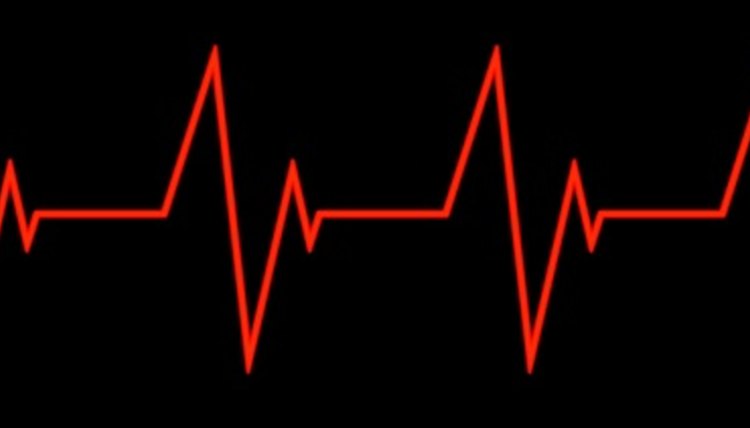Difference in Heart Rate According to Gender

Historically, minor heart rate differences have been cited as early as the first stage of fetal development. Heart rate differences in gender have been studied through childhood and adulthood. Heart rate can be taken by measuring your pulse. Pulse can be found at major arteries located in the neck, wrist, groin, posterior knee, forehead and ankle. Heart rate is dependent on age, gender, fitness level, medications, family history and stress levels.
Heart Rate Variability
Adolescent and adult heart rate was found to be significantly higher in women than men. Gender differences in heart rate can be seen at the pediatric and adult levels. A 2009 study by Mays et al. examined 1087 patients girls and boys ages 11 to 18 for heart rate values at 40, 50, 60, 80, and 85 percent maximal VO2 levels. Starting at 40 percent VO2 max, girls had average heart rates of 106 to 134; boys had heart rates of 101 to 131. Mays et al. concluded that the average female heart rate is significantly higher than the average male heart rate at all stages except 80 percent VO2 max.
Heart Rate Max
Heart rate max is the estimated peak heart rate. It's used during exercise testing and evaluation of exercise-induced conditions. Older research used male-only studies, which researchers have found overestimates the risks of women of 35 or older. Heart rate is now calculated by gender-specific formulas. Previous formulas have been generic, grouping both genders together. Historically, research has considered women to be the same as smaller and lighter men. New formulas suggest women use 206 minus 88 percent of your age and 220 minus your age for men. For example, a 50-year-old women would have a maximal heart rate of 162; a man would have one of 170 beats per minute.
Resting Heart Rate
Resting heart rate does not differentiate between male and female patients. As you age, your heart rate decreases. Infants have resting heart rates of 100 to 160 beats per minute. Children younger than 10 range from 70 to 120 beats per minute. Adults typically have resting heart rates of 60 to 100 beats per minute. Student-athletes and adults who are extremely physically active may have heart rates between 40 and 60 beats per minute. Resting heart rate is an approximate measurement. Heart rate seems to be more complex for women. Gender and age differences account for the range of resting heart rate and the differences in heart rate dynamics.
Effects
Gender-related differences may correlate to lower cardiovascular disease in women and greater longevity of life for women. Women live longer lives than men but have a higher risk of sudden, heart-related death compared to men. The American Heart Association reports that 23 percent of women older than 40 with a history of heart attack die within a year, as opposed to 18 percent of men. The American Heart Association estimates that more than 8 million females have a history of heart attack or angina. Sixty-four percent of women who died from heart disease had no previous symptoms.
Considerations
A study published in the Journal of American College of Cardiology by Ryan et al concluded that mean heart rate did not differ between male or female participants in any age group. For both men and women, power output and frequency decreased over time. This study concluded that high and low frequency of power during spontaneous and metronomic breathing was lower in men than in women of similar age. Heart rate entropy also decreased at a higher rate in men as opposed to women at comparable ages. Heart rate formulas are estimates that do not take into account people's medical conditions and height, weight and blood volume specifics. Averaging heart rate measurements and using age-predicted heart rate formulas may give results within 10 to 15 beats per average. Mean heart rate may skew research findings a little.
References
Writer Bio
Kristen McCarty started writing wellness articles for students and faculty in 2007. She has worked as a certified athletic trainer and health educator at the collegiate and secondary school levels. She now writes for LIVESTRONG.COM. She holds a Bachelor of Science in sports medicine concentrating in athletic training from Mercyhurst College and a Masters of Arts in applied physiology from Teachers College-Columbia University.
